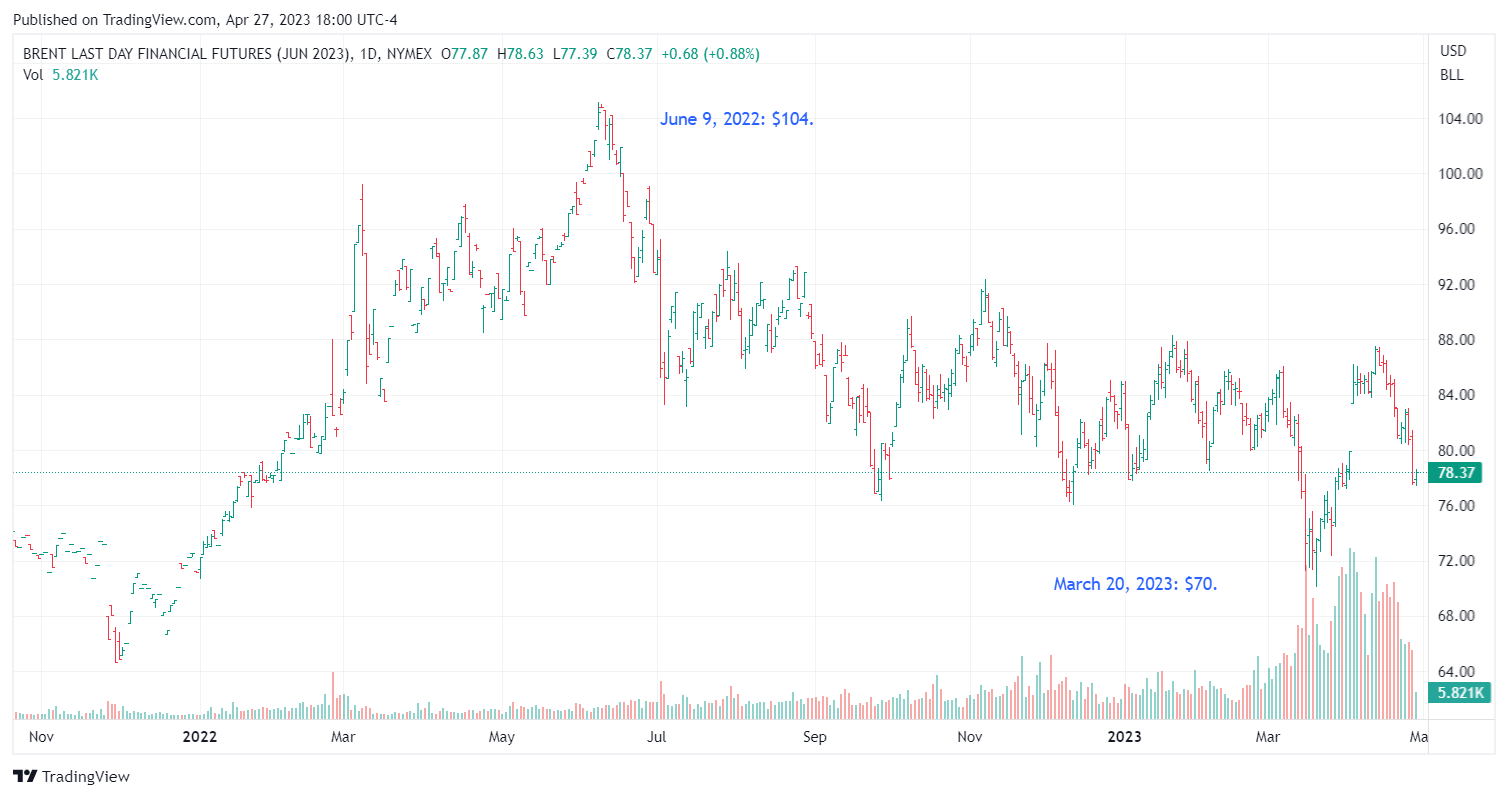Story by Nissa Darbonne|Oil and Gas Investor. OPEC members hope their 1.16-MMbbl/d cut will get Brent to more than $90, said Scott Sheffield, CEO of Pioneer Natural Resources Co.
But the futures market isn’t biting.
The lowered output is set to begin May 1. Yet the prompt-month (June delivery) Nymex price for Brent on April 27 was about $78 per barrel — three weeks after the April 3 announcement. The $78 is less than the pre-cut-announcement price, according to CME Group trading archives.
Saudi Arabia’s breakeven price is roughly $80 a barrel “from a budgetary standpoint,” Sheffield told Hart Energy in an exclusive interview. “They need Brent to be definitely over $80 as they transform the Saudi economy away from oil.”
The production cut’s effect on futures will be clearer in the coming months, he added. “We need to see what happens in June, July and August—the summer months—where demand picks up significantly, I think.
 “But their whole goal is to get the oil price back up somewhere around $90 to $100 a barrel.”
“But their whole goal is to get the oil price back up somewhere around $90 to $100 a barrel.”
One motivation for the pare is that members “want to be getting rid of the shorts on oil,” he said.
With Brent in the $70s, “they’ve lost everything that they’ve gained already” from previously higher prices.
Members are also “concerned about what happened to Credit Suisse and Silicon Valley Bank [SVB] in regard to the potential recession going on in the U.S. and Europe.”
Although, “I personally don’t think we’re in a recession myself,” he said.
For June 2023, Brent is up from intraday trading as low as $70 on March 20 upon news of Credit Suisse’s imminent failure. The bank survived a collapse after intervention by a Swiss-government-negotiated deal to sell the bank to UBS. Credit Suisse’s end was preceded by U.S. bank failures, namely SVB on March 10.
Still, June Brent is down from as much $104 in June of 2022, according to CME Group data.
READ NEXT: US Crude to Dominate Brent Oil Benchmark Under Index Change
Margins ‘still strong’ for Pioneer
As for WTI, the U.S. benchmark crude price, the 12-month strip was $72 on April 27. Is $70-something still good enough for U.S. oil producers?
It certainly is for Pioneer, Sheffield said. “Our breakeven is around $45 [including] our base dividend. It’s below that, obviously, without the base dividend. And so the margins are still strong.”
At the current strip, Pioneer estimates producing $4 billion of free cash flow this year.
“So it’s still a very, very strong number. It just happens not to be strong enough for Saudi [Arabia] and some of the other OPEC countries.”
The unexpected cut is in contrast to OPEC’s refusal to cut in November of 2014, when markets were expecting it to balance global oversupply that was derived from U.S. producers’ shale success.
Members eventually relented and confirmed that their point was, in fact, to crush U.S. producers out of the market. Instead, U.S. producers’ production and profitability grew as oilfield-service costs declined, frothy investment capital retreated, bankruptcies cleaned up balance sheets and field efficiencies were made.
Sheffield, who has known three past Saudi oil ministers, said what’s different today is that the new minister, Abdulaziz bin Salman, is a half-brother of Crown Prince Muhammed bin Salman, known as MBS.
“So they’re very close. They work closely together,” Sheffield said. “This is the first time that they’ve had an oil minister in Saudi Arabia that is a relative of the crown prince, who will most likely be the king sometime in the near future.”
The April 27 price for June 2023 WTI was about $75, down from $100 in early June of last year and up from $64 in intraday trading this past March 20, according to the CME Group data.



